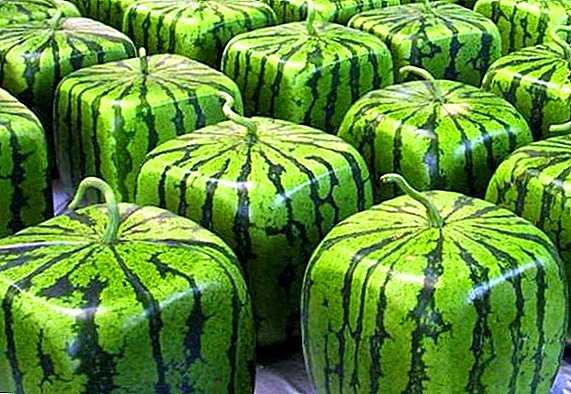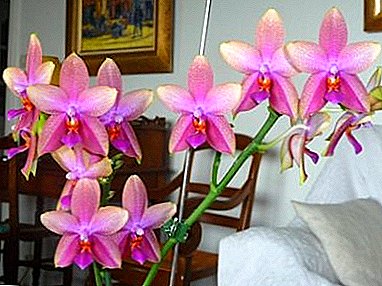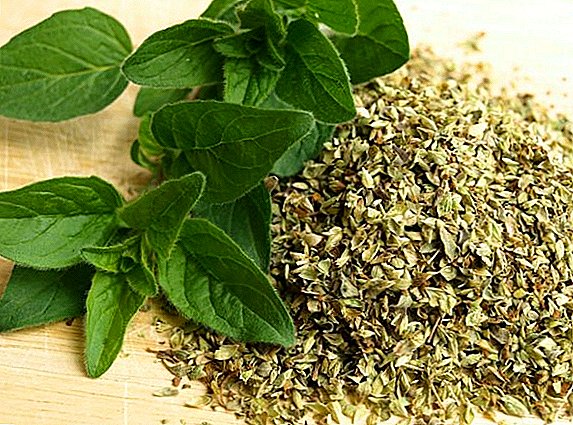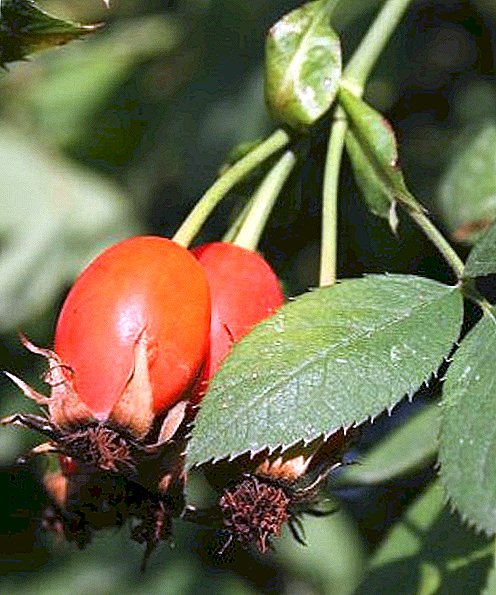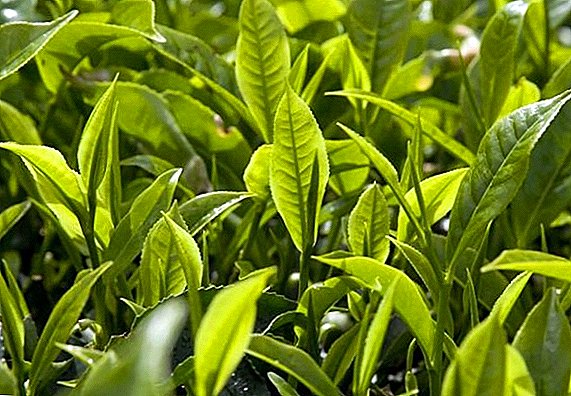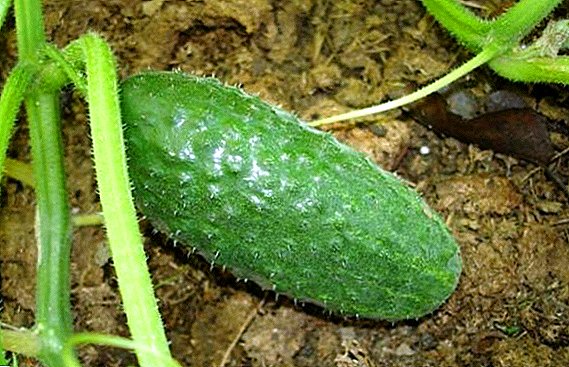 Most of the hybrids of cucumbers are protected from common diseases and pests, but they are far from having the best taste, and the requirements for the conditions beyond.
Most of the hybrids of cucumbers are protected from common diseases and pests, but they are far from having the best taste, and the requirements for the conditions beyond.
Today we consider a hybrid that is not only delicious, but also unique in its own way.
We will tell about the benefits of the variety, and also describe the cultivation in several ways.
Variety description
"Liliput F1" is a hybrid of cucumbers, which can be planted both in the greenhouse and in the open ground. Fruits on substrates of different fertility, the growing season is 40 days. The bush is of medium height, has weak branching. In each bosom of the leaf is formed up to 10 fruits.
A distinctive feature of this hybrid is that there are no seeds inside the cucumbers. This allows you to receive fruits without pollination. That is, during flowering, you can keep the greenhouse closed, eliminating the entry of insects that can spoil the crop.
Cucumbers that do not require pollination are called parthenocarpic, among these it is worth noting cucumbers "Shosh", "Ecole", "Crispina", "Amur", "Cedric", "April", "Hector", "Emerald earrings", "Berendey" , "Herman".
The domestic firm Gavrish is selling the seeds, so the hybrid is adapted to temperate climates, and in the southern regions it can be grown without shelter.

Important! The hybrid is resistant to powdery mildew, olive blotch, root rot.
Fruit characteristics and yield
- Maximum mass of cucumber - 100 g
- Length - 8-9 cm
- Diameter - 2-3 cm
- Average yield - 11 kg from 1 square.
The fruits have a cylindrical shape, scattered around the surface of many tubercles with small needles, which are easily broken off. The skin is colored dark green, with light green areas at the ends of the fruit. The flesh is juicy, crunchy.
Note that this hybrid does not turn yellow, even when overriding. This allows the planned collection of products, without the threat of loss due to changes in air temperature or humidity.
Learn how to keep cucumbers fresh.
Fruit use
Often, hybrids do not differ in full taste, but rather resemble watery grass in the form of a vegetable. However, the cucumber "Liliput" not only has excellent taste, but also intended for salting or pickling. Also goes well with other vegetables in summer salads.

The fruits of this hybrid have a good container, so they can be maintained for a long time without any treatment.
Did you know? Spines on the fruits of culture are necessary to remove excess moisture. In wild varieties, spines also perform a protective function.
Advantages and disadvantages
Pros:
- bear fruit without pollination;
- can be grown both indoors and outdoors;
- good taste;
- excellent product quality;
- availability of disease resistance.
- relatively high price of seeds;
- it is impossible to get seeds from the fruit for planting;
- yield is completely dependent on care.

Growing cucumbers
Consider planting and caring for a hybrid, as well as tell you about the optimal conditions for obtaining the maximum yield.
Soil preparation and site selection
It will be a question of the quality of the soil at a permanent place of cultivation, since soil from a flower shop is often used for sowing on seedlings.
Regardless of whether cucumbers are grown in a greenhouse or open field, the substrate must be pre-saturated with minerals, as well as organic matter. To do this, close up humus, compost, sawdust or fallen leaves. Such fertilizers not only improve the nutritional value of the soil, but also its structure. As for the "mineral water", it is enough to make a small dose of the main elements - phosphorus, nitrogen and potassium.
The substrate must have a neutral or slightly alkaline reaction, since acidic soils are not suitable for growing a hybrid. Also clay soils are not suitable, as they do not allow moisture and air to pass through.

For sowing, you should choose a flat area or a small hill. In the lowland bushes will be constantly podtaplivatsya, which will cause rotting.
Important! Cucumbers should be grown in an open area. Even a small penumbra extremely negative impact on yield.
Landing rules
Since this hybrid is intended for cultivation in temperate climates, there are two ways of planting: transplanting or sowing directly into the soil.
Seedling method
This method is advisable to use in the northern regions of the temperate zone, as well as when grown in a greenhouse. For sowing seeds, peat pots or small containers are used to prevent excessive moisture from accumulating in the soil. Containers or pots must have drainage holes.
Before sowing the soil is moistened. Next, make a small hole, a depth of 1.5-2 cm, which put the seeds. The surface is leveled, after which the containers or pots are covered with a film and moved to a warm place. The presence of lighting before the appearance of the first shoots is not required.

After the first greenery appears, the film is removed, and the boxes are transferred to a well-lit place without drafts. Watering is carried out as the soil dries, not forgetting about loosening.
Transplantation in open ground or greenhouse is carried out in 20-25 days after sowing. At seedling by this moment 2-3 true sheets should form. A few days before the picking, it is recommended to take out the containers with cucumbers on the street or in the greenhouse for a few hours so that they get used to the new conditions.
Learn how to disinfect the soil before planting seedlings, how to save space and soil when planting seedlings, when to sow cucumbers for seedlings, how to grow cucumber seedlings.
Seedless method
This method is practiced in the southern regions, where stable warm weather sets in as early as May. The soil at the time of sowing should warm up to 15 ° C, otherwise shoots will appear in a few weeks.
The optimal planting scheme is 50x50 cm. Since the seeds have good germination, you can immediately sow them according to this scheme, so as not to risk the root system in the process of transplanting.

In the conditions of open ground, the formation of young plants may occur a little slower, therefore, it is recommended at the initial stage to apply nitrogen fertilizers in small quantities. You can also use a highly diluted solution of mullein.
Find out when to plant cucumbers in open ground, how to water, what to feed.
Cucumber care
Watering
The best option - drip irrigation. Such a system allows to reduce water consumption, prevents the erosion of the roots, as well as the rotting of fruits that are in contact with the soil. An alternative option is a garden spray bottle that moisturizes the ground well, preventing the formation of a crust.
Use a hose and a trench for irrigation is not worth it, because such irrigation significantly increases water consumption, and also rewet the soil, which leads to the appearance of disease.
Top dressing
Before flowering, you should make the optimal dose of potash and nitrogen fertilizers to increase the growth of green mass. After flowering, phosphorus fertilizers and trace elements are added exclusively. Trace elements should be made by foliar irrigation.

Garter
Cucumber bushes are not miniature, therefore, to avoid shading by neighboring bushes, as well as for the convenience of harvesting, the plants are sent to the trellis. This allows you to quickly and efficiently carry out weeding and loosening the soil.
Did you know? Cucumber seeds remove harmful cholesterol from the body, and cucumber juice prevents the conversion of carbohydrates into fats, thereby preventing the appearance of fat deposits.Mulching
In order not to waste too much time on weeding and loosening the soil, as well as to eliminate damage to the root system as a result of overcooling or overheating, the substrate is covered with sawdust, pine needles or grass. Mulching reduces water consumption, and also allows you to keep the soil moist even during extreme heat.

Hybrid "Liliput" gives delicious products of excellent quality, and also has almost no flaws. It is suitable for both large farms, and for growing in the garden.
Reviews of cucumbers "Liliput"
immediately moved under the lamp. Another day later, these are
And it’s necessary, the law of meanness ... Only I sowed the seeds, an hour later they called me, they said that there were seeds of hybrids that I planted in 2010 - Picnic and Liliput. In terms of yield, they are no worse than the Dutch ones, and their taste is much better, more tender. And the “Dutchmen” do not work out in the open field, but these were There was also a Khutorok, here it was more unconditioned, and these two were one-on-one cucumbers. They bought me Liliput, Picnic and more - Murashka, for me a new one, but, from those who planted, very good reviews. If anyone gets the seeds - plant, try, I hope, you will not be disappointed.
Yes, up to 5-6 leaves of flowers should be removed, otherwise the plant will be exhausted immediately and there will be no sense from it.




